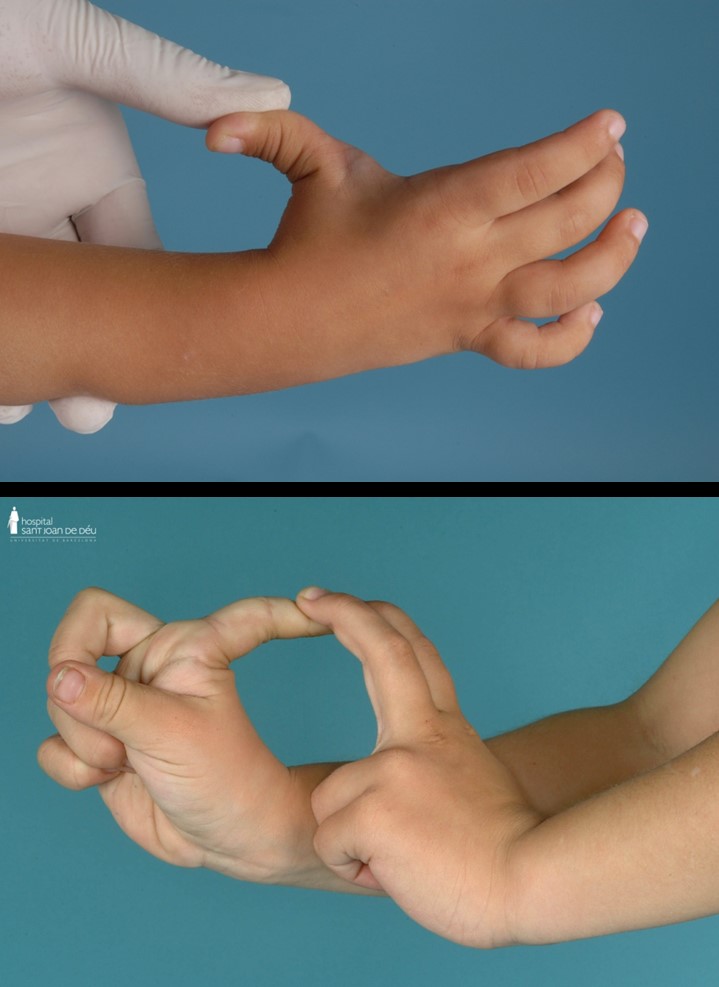Osteogenesis imperfecta
3.1. Hipermobility and sprains
Some individuals with osteogenesis imperfecta may exhibit joint hyperlaxity or hypermobility, commonly known as "double-jointedness." This condition is characterised by excessive mobility of the joints, attributed to the increased elasticity of ligaments and collagen-rich soft tissues surrounding the joints. For some patients, this condition may be asymptomatic, merely showcasing the ability to articulate joints in a wider range than typical (see Figure 18). However, in certain cases, joint pain (arthralgia), sprains (resulting from excessive twisting of the joint and overstretching of ligaments), or even joint dislocations (when the bone shifts out of its natural joint socket) can occur. Such instances may lead to the stretching of ligaments and tendons beyond their limits.

The treatment for symptomatic hyperlaxity primarily involves physiotherapy aimed at strengthening the muscles surrounding the joints to enhance stability. In cases of joint distension or sprains, temporary immobilisation is necessary, although the duration should be kept to a minimum in OI. In situations where a ligament or tendon tear occurs, surgical intervention may be required.